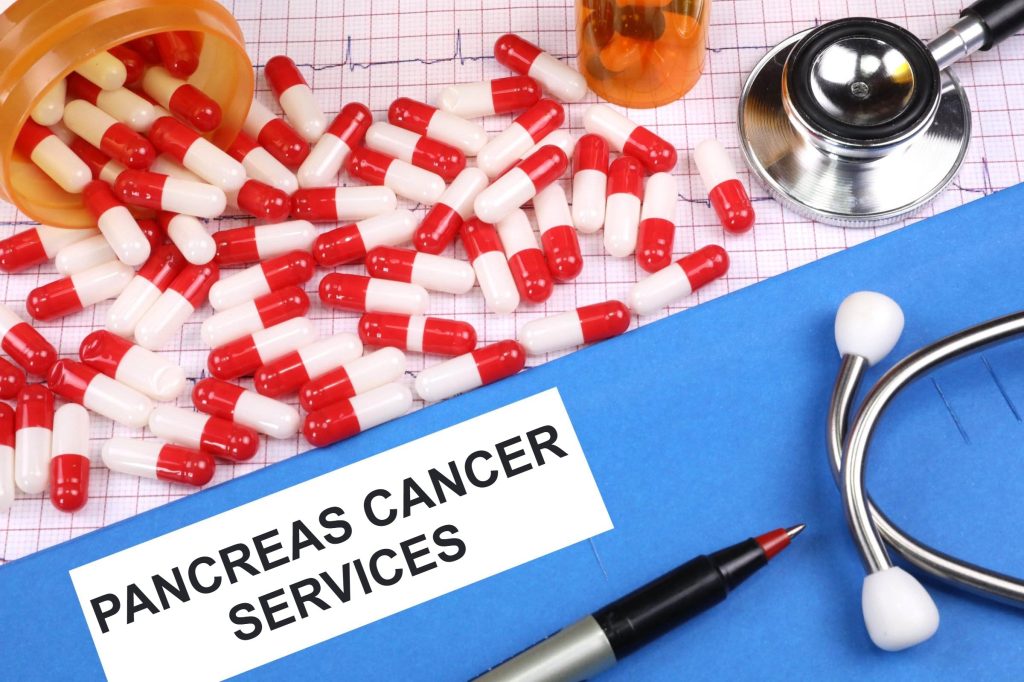Minimize fat intake in your diet to protect against pancreatic cancer.

The pancreas is an important organ of the body. It is located in the upper left side of the abdomen, near the liver, under the chest, and is connected to the small intestine and gallbladder. It looks like a large fish, with a long head and tail. The right part of the pancreas, called the head, is slightly larger and is located in the bend of the duodenum.
The second part extends upward, while the tail part is found near the spleen. This organ plays a key role in the digestive system. The pancreas has five parts.
(1) The part of the pancreas, which turns inward towards the pancreas, contains the two most important arteries.
(2) On the right side of the abdomen is the head of the pancreas, which is slightly wider.
(3) The thin part after the head of the pancreas is called the neck.
(4) The middle part of the pancreas is its body.
(5) The last part is called its tail.
The pancreas produces two types of secretions. One important secretion is digestive enzymes, which play an important role in the digestion of proteins, starches, and fats. It passes through the pancreatic duct. The pancreas contains clusters of about one million cells, medically called Langerhans Islets, which produce insulin.
Insulin is released directly into the blood without a duct. If it is produced in small quantities, its deficiency causes an increase in the amount of sugar in the blood, which eventually ends up in the urine. In addition to insulin, the pancreas produces another secretion called Glucagon, which has the opposite effect of insulin. That is, instead of reducing blood sugar, it increases its level.
This secretion actually breaks down (i.e. digests) glycogen stored in the liver.
Pancreatic cancer
There are many diseases of the pancreas, but pancreatic cancer is extremely dangerous, because in most cases it is diagnosed when it has already reached a very malignant stage. People who suffer from pancreatitis or diabetes are more and more affected by pancreatic cancer.
People affected by pancreatic cancer usually show symptoms like jaundice. That is, their skin color and eyes turn yellow. They become weak and usually have pain in their stomach. Like other types of cancer, its treatment also proves effective if it is done on time, otherwise delay can prove fatal. Therefore, when any unusual symptoms appear, a doctor should be contacted.
Usually, when blood is discharged from the anus, it is considered as hemorrhoids and the bleeding is stopped by taking medicine temporarily, and when a doctor is consulted with complications, it is already too late. In middle-aged people, hemorrhoids and cancer should not be considered separately and the correct diagnosis of both is very important. Another misleading symptom in this regard is constipation.
This disease is also very common, and medicines are used to get rid of it or home remedies are tried. They provide temporary relief, but if pancreatic cancer is present, eventually it causes obstruction in the large intestine and anti-constipation medicines, remedies, etc. are also not effective and colonic spasms begin to occur.
Since pancreatic cancer spreads very quickly, the duration of the initial and later stages of cancer is very short.
This is why the chances of diagnosis and treatment of cancer in the early stages are low. However, common symptoms of pancreatic cancer include abdominal pain, jaundice, weight loss, loss of appetite, digestive problems, and diabetes, etc.
Since pancreatic cancer is fatal, its mortality rate is also quite high. According to a report, the mortality rate of pancreatic cancer in Pakistan is 8097%.
To stay safe from pancreatic cancer, minimize the consumption of fat in your diet. Avoid red meat. Eat vegetables and fruits at least twice a day. Use wholemeal bread, cornbread, or porridge. Wash vegetables like cauliflower, cabbage, turnips, beets, and radishes thoroughly before eating them raw. For more calcium, consume greens, beans, peas, and chickpeas as much as possible.
Milk should be consumed without skim milk. Avoid excess weight. Walk for about 30 minutes daily. After the age of forty, get your medical check-up done as advised by your doctor. Make exercise a part of your routine and be happy.
According to a study conducted in the United States, pancreatic cancer can be diagnosed by measuring the body mass index (BMI) of any individual. Based on the information obtained, Dr. Alan A., head of the obesity research team at New York University School of Medicine, and his colleagues have discovered the relationship between pancreatic cancer and obesity. The results of this study have shown that obese people (whether they are men or women) may develop pancreatic cancer early.


